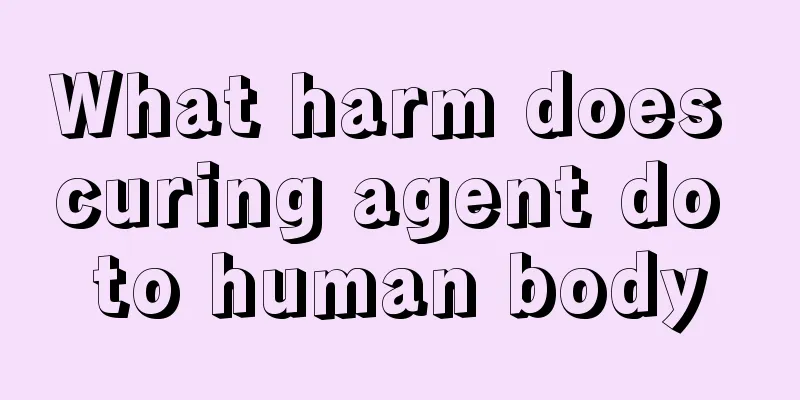How many types of hernia are there

|
Hernia is a disease, but it is divided into many types: reducible hernia, irreducible hernia, etc. These are relatively serious, and its causes are also divided into many types. If you have a hernia, don't be too anxious. You can massage yourself gently first, try to eliminate the hernia or take some medicine to eliminate hernia and treat it as soon as possible. The most important thing is to pay attention to your normal diet and lifestyle to avoid the recurrence of hernia. Clinical type Reducible hernia The hernia contents can be easily and completely returned to the abdominal cavity. When the intra-abdominal pressure rises suddenly, the herniation may be returned to the abdominal cavity by lying down naturally or pushing gently with the hands. Irreducible hernia It means that the contents of the hernia cannot be completely returned to the abdominal cavity, but do not cause serious clinical symptoms. Incarcerated hernia When the hernia ring is small and the abdominal pressure suddenly increases, the hernia contents force the expansion of the sac neck into the hernia sac, and then the retraction of the sac neck clamps the hernia contents, making them unable to return. Strangulated hernia If an incarcerated hernia cannot be relieved in time, it will cause blood circulation disorders or even necrosis of the incarcerated hernia contents, which is called a strangulated hernia. Clinical symptoms ⒈A reducible mass in the inguinal area that may sometimes fall into the scrotum. ⒉ Occasionally there is local distension and referred pain, but generally no special discomfort. As the disease progresses, the lump may gradually increase in size and affect your daily life. Sliding hernia is more common on the right side, with a left-right incidence ratio of approximately 1:6. When incarceration occurs, the hernia mass suddenly increases in size, is accompanied by obvious pain and tenderness, and the hernia contents cannot be retracted. If accompanied by blood supply obstruction, clinical symptoms of strangulated hernia will appear. If not treated in time, it may lead to complications such as intestinal necrosis and intestinal fistula, and even endanger life. Classification 1. Infants and children: mostly caused by umbilical cord, crying, or constipation. ⒉ Juveniles and young people: Mostly caused by organ migration during development, or changes in tissues and organs. ⒊ Middle-aged: Small intestinal hernia is often caused by overwork. ⒋Old age: Weak abdominal wall and constipation can cause hernia. Five major hazards Affects the digestive system Patients experience symptoms such as lower abdominal distension, bloating, abdominal pain, constipation, poor nutrient absorption, fatigue and physical decline; Affects development and fertility Because inguinal hernias are adjacent to the urinary and reproductive systems, elderly patients are prone to bladder or prostate diseases such as frequent urination, urgency, and increased nocturia; children may suffer from the normal development of the testicles due to the compression of the hernia; and young and middle-aged patients are prone to sexual dysfunction, and women are prone to infertility. Hernia can cause other diseases The intestines or omentum in the hernia sac are easily squeezed or collided, causing inflammatory swelling, making it difficult to reduce the hernia, which may lead to hernia incarceration, intestinal obstruction, intestinal necrosis, severe abdominal pain and other dangerous diseases; Suffering from psychological pain Hernia causes inconvenience to patients' work and life, and factors such as complaints and misunderstandings from others will increase psychological pressure, easily causing depression and inferiority in patients, and leading to distorted and split personality; Threat to life and health Hernias often move up and down, back and forth, causing the neck of the hernia sac to be repeatedly rubbed, becoming thickened and tough. Moreover, the hernial ring is exposed to the stimulation of hernial contents for a long time, which can easily lead to adhesion of the hernial sac and the occurrence of incarcerated hernia, and even develop into strangulated hernia, posing a threat to the patient's life and easily causing dangerous situations. |
<<: What to do if your face is allergic to alcohol
>>: Small nipples under the armpits
Recommend
Nursing measures for postoperative infection of endometrial cancer
We all know that endometrial cancer is a serious ...
I can always feel my heart pounding
Under normal circumstances, our hearts beat regul...
Sequelae after laryngeal cancer surgery
After suffering from laryngeal cancer, patients w...
Which cold medicine is best? You also need to choose the right medicine to treat a cold
When you have a cold, you cannot take medicine at...
Hard lump under the skin of forehead
The subcutaneous lump on the forehead is a type o...
Is blood pressure of 159 serious?
The blood in the body's blood vessels needs b...
How to treat and prevent gallstones in the early stages?
Gallstones are a common clinical disease. It is a...
What is the normal value of aspartate aminotransferase? What is the clinical significance?
Many people are not clear about what aspartate am...
Tips on how to remove moles in 1 day
If there are spots or moles on the face, it will ...
The benefits of using Chinese medicine after prostate cancer surgery
Many people do not believe that kidney cancer can...
How long does it usually take to conceive after sex
Many people want to have a comprehensive understa...
What are the common symptoms of ovarian cancer?
Ovarian cancer is also a common disease in life, ...
Is there any good way to solve tinnitus?
Tinnitus is a relatively common symptom. There ar...
Sympathetic nerves of the heart
The cardiac sympathetic nerves are part of the au...









